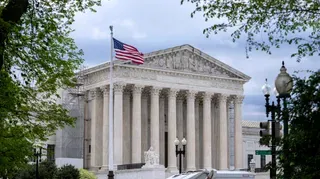February 20, 2014
Downside of Low Inflation: A Weaker Global Economy
Drew Altizer READ TIME: 5 MIN.
Since the Great Recession ended 4� years ago, Americans have struggled with high unemployment, static pay and a slow economy. Yet they've had one thing in their favor: low inflation.
Well, hold the applause.
It might be unfathomable to people who still bear scars from the double-digit inflation of the 1970s, but what the global economy could use right now is a dose of higher prices.
Overall prices are barely budging because the economy is still weak. And the reverse may be true, too: Super-low inflation has likely slowed growth from the United States to Japan to Europe. It's why the world's central banks would like prices to rise.
Most people aren't likely to work up much anxiety about low inflation. After all, the benefits can be great. Cellphone service has gotten cheaper. Breakfast cereal prices have dropped the past two years. So has the cost of bedroom furniture. TV prices have plummeted 29 percent since 2012.
And low inflation is surely preferable to runaway inflation. Back in 1980, U.S. inflation reached 13.5 percent.
Last year, overall U.S. prices inched up just 1.1 percent, according to the Federal Reserve's preferred gauge. Inflation has stayed below the Fed's 2 percent target for two years. On Wednesday, the government said its producer price index, which tracks prices before they reach consumers, had risen just 1.2 percent over the past 12 months.
Yet Ben Bernanke, the just-departed Fed chairman, has said policymakers worry as much when inflation is too low as when it's too high.
What's wrong with very low inflation?
Lots. When prices barely move, many people postpone purchases. Why rush, if the same price - or lower - will be available in six months? Collectively, these delays slow consumer spending, the economy's main fuel.
Ultra-low inflation also makes the inflation-adjusted cost of a loan more expensive.
And too-low inflation raises the prospect of something worse: deflation - a broad decline in prices, pay and the value of stocks, homes or other assets. Deflation can further restrain spending and even tip an economy into recession.
Just ask the Japanese.
Japan has been stuck in a deflationary trap for most of two decades. Its economy has barely grown. Fears have spiked that Europe might be next.
For now, prices in Europe are ticking up - barely. Inflation in the 18 nations that use the euro currency rose 0.7 percent in January from a year earlier. In Japan, consumer prices rose 0.4 percent for 2013. That counts for good news: It was Japan's first overall price increase in five years. Its central bank is trying to lift inflation to 2 percent.
So why is inflation so low across the developed world?
Blame a persistently subpar economy and a tough job market. When good jobs are scarce, businesses can hold down pay and prices. Companies can cheaply produce enough to meet demand.
"Prices have only gone down because nobody has any money to buy stuff," says Antonio Duarte, a retired postal worker in Lisbon, Portugal, who favors discount stores. "It's all about supply and demand."
Other trends have contributed. Most clothing and furniture in the United States comes from lower-cost manufacturers overseas. Technological innovation has improved the quality of TVs and smartphones while cutting their costs.
A more fundamental factor is at work, too: People believe inflation will stay low. And inflation expectations can be self-fulfilling. Suppose a company expects to pay 3 percent more for salary and materials next year. It will then raise its own prices 3 percent. The company's expectations would help produce 3 percent inflation.
Ask people if they're enjoying low inflation, and you may encounter puzzlement. Many of us don't feel it. One reason: Apart from the government's broad inflation gauges, many items have gotten much costlier over the past five or 10 years.
Though gasoline prices, for example, have risen just 1 percent in two years - a big reason overall inflation is low - gas is still nearly 14 percent costlier than before the recession. Drivers face that reality every day.
Consider Allison Casey, 63, of Essex, Conn. She was relieved to find a job in August after 18 months of unemployment. But Casey now drives 25 miles each way to work at a specialty food store. She used to drive just a mile to her job as a chef at a country club.
Recently, she paid $3.56 a gallon. Six years ago, "I was probably paying $1.65 or $2 for a gallon of gas."
Other services have grown more expensive. Health care costs have long risen faster than overall inflation. And college tuition has soared 76 percent in 10 years. Yet stable or falling prices for many other items have offset those trends.
Low inflation does help when pay increases are weak. Consumers can stretch their dollars, yen and euros. In hard-hit European economies, such as Greece and Portugal, prices have actually fallen in the past year.
Ace Hardware CEO John Venhuizen says his company paid less to manufacturers for products it sells in 2013 than in 2012. That's helped offset other rising costs, such as health care.
"We are delighted," Venhuizen says. "There's far less price pressure than I would have anticipated five years ago."
Yet low prices pose a downside for some businesses. Big chains such as Wal-Mart, Best Buy and Bed, Bath & Beyond fought a brutal price war during the past holiday shopping season. The discounts got Americans to spend more. But 33 retail chains cut their profit estimates for the final months of 2013, according to RetailMetrics LLC.
By contrast, if retailers could raise prices, say, 3 percent or 4 percent, the extra revenue would allow them to pay employees more. And they wouldn't have to rely strictly on cost cuts to deliver profits.
Other businesses might also spend more. U.S. companies are sitting on nearly $2 trillion in cash, according to the Fed. Jared Bernstein, an economist at the Center on Budget and Policy Priorities, notes that low inflation leads many businesses to hoard cash. Higher inflation, by contrast, would erode the cash's value. So businesses would be more inclined to spend - to hire or buy equipment.
Higher inflation would also make it easier for Americans to manage their debts. Laurence Ball, an economics professor at Johns Hopkins, notes that many car buyers have loans with rates of 2 percent or less. If inflation were 3 percent or more, pay would likely rise. The car loans would become cheaper to pay off.
In Europe, higher inflation could help resolve that region's economic crisis. Greece and other poorer members of the eurozone let wages and prices rise too high, and their goods became comparatively expensive. Now, they must reduce wages and prices, especially compared with stronger economies like Germany. If inflation were higher in the richer countries, it would help ease prices and pay in the poorer countries and encourage hiring.
In the United States, many economists have long feared that the Fed's efforts to stimulate growth would ignite inflation. Since 2008, the Fed has bought more than $3 trillion in bonds to try to keep loan rates low to encourage spending.
Yet to the surprise of many, all the money the Fed has pumped out hasn't caused prices to jump.
"It's a bit of a riddle," says Richard Fisher, president of the Federal Reserve Bank of Dallas.
Other economists note that most of the money the Fed has created is being held by large commercial banks as reserves. And consumers and businesses aren't clamoring for loans. Banks have tightened their lending standards. So the new money created by the Fed hasn't circulated through the economy, where it might have accelerated inflation.
Most economists foresee inflation remaining low for at least two more years. Fed policymakers have forecast that inflation will be just 1.7 percent to 2 percent in 2016.
They'd be happy to be wrong. An uptick in inflation "is a sign that growth is happening," says Alberto Cavallo, an economics professor at MIT.
___
AP writer Barry Hatton in Lisbon, Portugal, contributed to this report.







